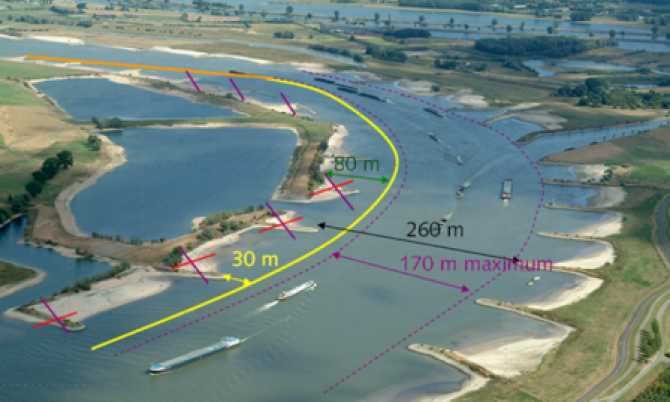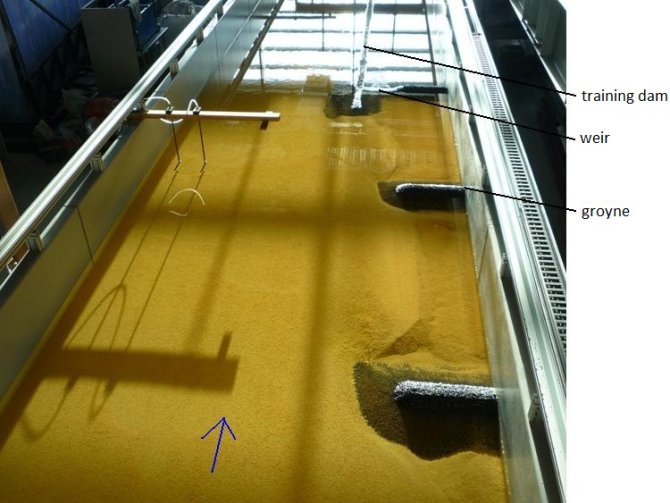Physical scale model of a training dam
Physical scale model with a mobile bed composed of lightweight sediment to establish morphodynamic behaviour around a training dam (River Rhine - The Netherlands)
Kees Sloff, Maarten van der Wal (Deltares)
Arjan Sieben (Rijkswaterstaat)
To manage the expected extremity in high and low river discharge, the state authority for infrastructure Rijkswaterstaat in the Netherlands, is searching for an alternative river design. Currently, the banks on both sides of the River Rhine are protected by groynes. Besides bank protection, the groynes keep the cross-section of the river relative narrow, to ensure water depth for navigation. During high water, however, the groynes are flooded and cause an increase in hydraulic roughness and because of this an increase in water level.
A possibility to ensure the navigation depth during low flow, and reduce the water levels during a high discharges, is the replacement of the groynes by a training dam at the inner bend of the river (Figure 1). The training dam will be placed at 30 meter from the head of the removed groynes and parallel to the river bank. Only at the shallow inner bend there is space for a new construction without reducing the width of the fairway. Between the training dam and the bank a new channels is created. The flow into this side channel is regulated by a fixed weir, so only a limited discharge will flow through the side channel during a low flow situation. During a flood the large amount of water can discharge trough the side channel, because extra space is created since the groynes are removed.
An uncertainty in the new dam and weir design is the behaviour of the river bed morphology during low and high flow. To adequately test the unknown morphological effects at local scale (dam size scale) a physical scale model is built in a flume (Figure 2). The scale model captures both the bed levels around the intake point of the side channel and the effect of the bed levels in the navigation channel. The model has a mobile bed composed of light weighted polystyrene to simulated the bed load transport in the channel. The relative density of the material in water is 1.055. In polystyrene dunes are developing in equal proportions to dunes in the prototype river. The applied flow velocity in the model is based on a scaling analysis of the dimensionless bed shear stress.
Laser scan results of the bed level shows that during low discharge the training dam has a positive effect on the bed levels in the navigation channel. The interpretation of the model results and the translation to the prototype is mainly focussing on the spatial pattern of erosion and sedimentation and the relative bed levels.


For more information please contact Matthijs Boersema or Ton Hoitink.